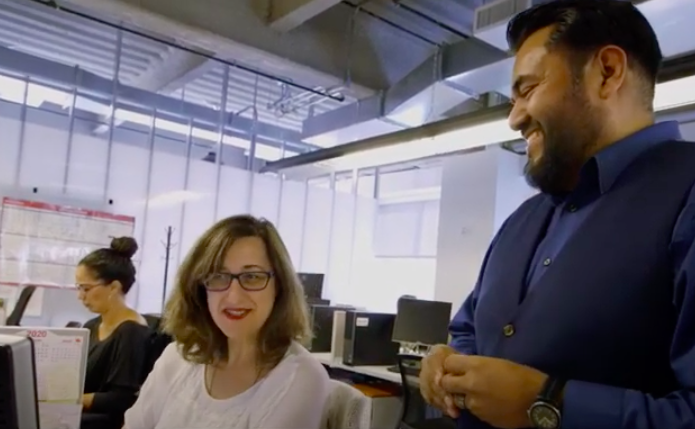
BRIC-TV
Garcia (right) in El Diario’s Brooklyn newsroom.Latinos are expected to form a larger share of the U.S. electorate in the 2020 presidential election than ever before —13.3 percent, according to the Pew Research Center, almost twice their slice of the vote in 2000. Yet only half of Latinos living in the United States are eligible to vote, which Pew says is the smallest share of any ethnic or racial group.
What’s more, two thirds of Latino voters live in just five states, reducing their national impact. However, one of those states, Florida, is a perennial swing state, and two others—less-red-than-before Arizona and Texas—will at least be interesting to watch on Election Night. (The two other states of the five, New York and California, are reliably Democratic. )
The geography of Latino political power is, in other words, complicated. So is the makeup of that voter pool. All ethnic and racial terms mask a diversity of viewpoints and backgrounds, but the concept of a “Latino vote” is especially oversimplified, encompassing as it does native citizens and immigrants, people from various racial groups (White, Black, indigenous and more) and an increasingly diverse mix of religious beliefs.
That’s the audience whom Jesus Garcia, a digital writer at El Diario, is trying to serve this election year. In part two of the three-part City Limits-BRIC series Global Entry—which looks at the unique perspectives New York City’s ethnic press brings to the 2020 campaign story—we hear below from Jesus about the particular concerns and multiple viewpoints that his readership brings to the table.
See part one, which focused on the Irish-American media, here. And stay tuned for part three, where a reporter in the city’s Chinese-language press gives her take on the race.








